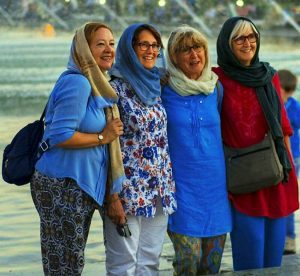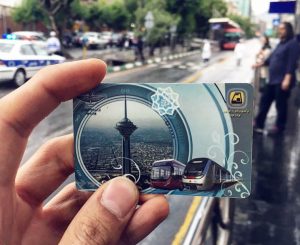Where else could be a better destination for your next trip than Iran! Read these tips to learn about the best time to visit Iran, what to wear, what to do, transportation, etc. Have a perfect trip to Iran!
#1 The best time to visit Iran
For good weather, the best time to have a trip to Iran is some time in the spring or fall. Since the climate is diverse among different cities of Iran, you will experience extreme weather conditions in most cities during winter and summer. That being said, the best months to visit Iran are April, May, September, and October.
It’s also good if you check the holidays. During the Nowruz holiday which is celebrated at the end of March, most shops are closed, hotels are booked, and tourist attractions are flooded by Iranian visitors. During the month of Ramadan, which is from May 8th to June 5th in 2019 (take care! Because it’s based on Islamic lunar calendar, every year it goes 10 days backward) as many Iranians follow the Islamic rule of fasting, restaurants are usually closed until the evening (Iftar time).
Read also: Iran Travel Hack: Stunning Places to Go in Each Season
#2 Plan your activities in Iran
Iran is full of historical and ancient places. There’s also a variety of beautiful landscapes which add to its attractions. For having a sufficient time visiting those places, it is a good idea to prepare a plan for the places you would like to visit and have an estimate of the time you want to spend on each. You can check out some of the interesting places like Persepolis near Shiraz, or Golestan palace in Tehran. Some of the great houses in Kashan would also be fabulous for those who love to see delicate Iranian architecture. And probably one of the most famous places in Isfahan called Naqsh-e Jahan square would be awesome to pay a visit. for more information check out this article: traveling Iran in each season
Want to travel to Iran cheap and easy? You can choose among reasonably priced ready-made trip packages or customize your own trip with our local travel experts, then book the whole package together and save hundreds. Check out Private Tours!
#3 Dress code and proper clothing in Iran
Iran’s dress code in public is a bit different from what is usually portrayed in the media. For women, wear a manteau (‘Manto’ as pronounced by Iranians) or a coat that covers your body properly and also wear long pants or jeans and have a scarf. But take it easy on yourself and try to wear something in which you feel comfortable. For men, long pants and t-shirts or shirts are proper. Men can wear shorts only if they’re enjoying the beach.

Three Visitors in Iranian Dress Style
#4 Money
If you’re thinking about using credit cards in Iran, the bad news is that international credit cards will be useless in Iran. But it doesn’t mean that you always need to carry cash. After changing your money to Rials, you can have them in a debit card. Many banks offer a gift card/tourist card which can be used within Iran’s banking network including ATMs and most shops. It’s also much safer than cash because, if you lose your card, you can block it by referring to a bank branch.
The thing about Iran’s currency is that Rial is the official currency but the term “Toman” is mostly used in Iran and is more common. Don’t get confused by these terms, you should simply add one zero to the price in Toman and you’ll find out the price in Rial. For example 20,000 Tomans is 200,000 Rials. for more information check out this article: money and cost in Iran.
#5 SIM card and connections in Iran
Buy a SIM card from the SIM card booths at the airport, or from a mobile phone store in the city. Irancell SIM cards, nowadays, costs 100,000 Rials. You can ask the seller to set it up for you and get you the amount of data you need. Plus, you need to purchase credit for your SIM card. The credit you buy (in any supermarket or shopping stands in the streets) is in the form of a little card which must be scratched for the a16-digit number to appear. Dial *141*16-digit no# and get your SIM card recharged.
Internet services like Facebook, Twitter, YouTube, and Telegram are filtered in Iran. You need a VPN to stay connected. Remember, while using VPNs is banned in Iran, almost all Iranians are using them without a problem. for more information check out this article: currency and cellphone
#6 Transportation in Iran
Check the tickets for domestic flights/buses, select your seat and book online using your own credit/debit card in 1stQuest.
Taxi: There are yellow cars available in every city, which represent the official taxis in Iran. They’re not expensive but remember to always check the prices before taking one.
SNAPP: SNAPP is an application similar to Uber. You can take a cab wherever you are at a very good rate. The language can be set to English but you might need to set the location properly on the map to avoid communication problems. The app is not widespread in Iran yet, but these are the important cities for tourists in which SNAPP is available: Tehran, Isfahan, Shiraz, Yazd, Tabriz and Northern cities like Sari and Babol.
Metro and BRT: the easiest, also the cheapest, way to get around Tehran, Shiraz, Isfahan, and Mashhad is to use Metro. To pay for the ride you can either buy a smart card (they work for Metro, buses, and BRT) which can be recharged anytime or buy a one-use ticket each time.

A Metro/Bus Card for Tehran
#7 Alcohol and other limitations in Iran
Alcohol is forbidden in Iran, even for tourists. Where you may find them in private parties or homes, you would never find any in restaurants or cafes, not even in hotels. While some of your friends might suggest a drink, our strong recommendation is to avoid any hand-made alcoholic drink.
Also, remember that physical contacts like shaking hands, hugging, kissing, etc. are forbidden between the opposite sexes in public. Also, homosexuality and sexual relationship between unmarried couples aren’t allowed legally.
Read also: Alcohol in Iran: All You Need to Know
